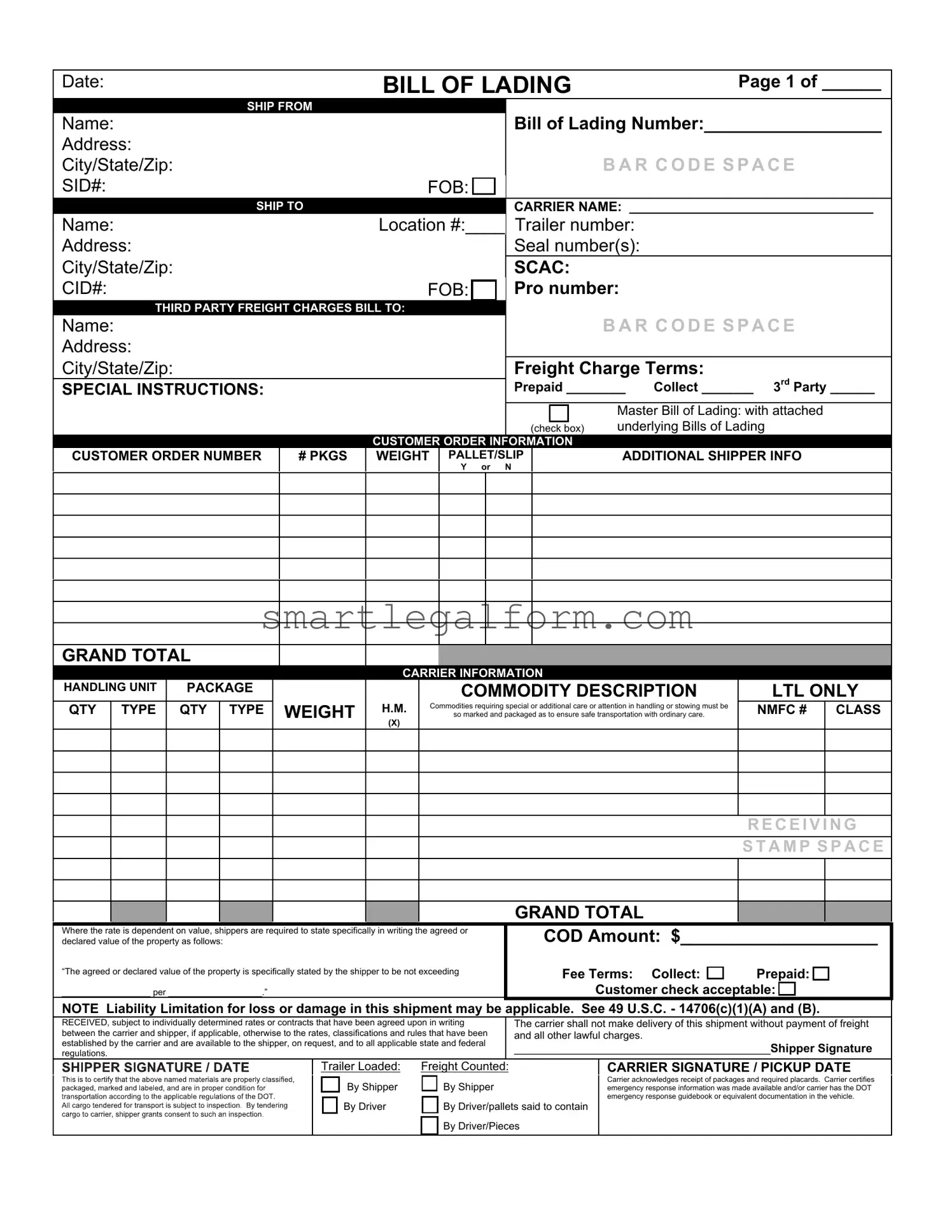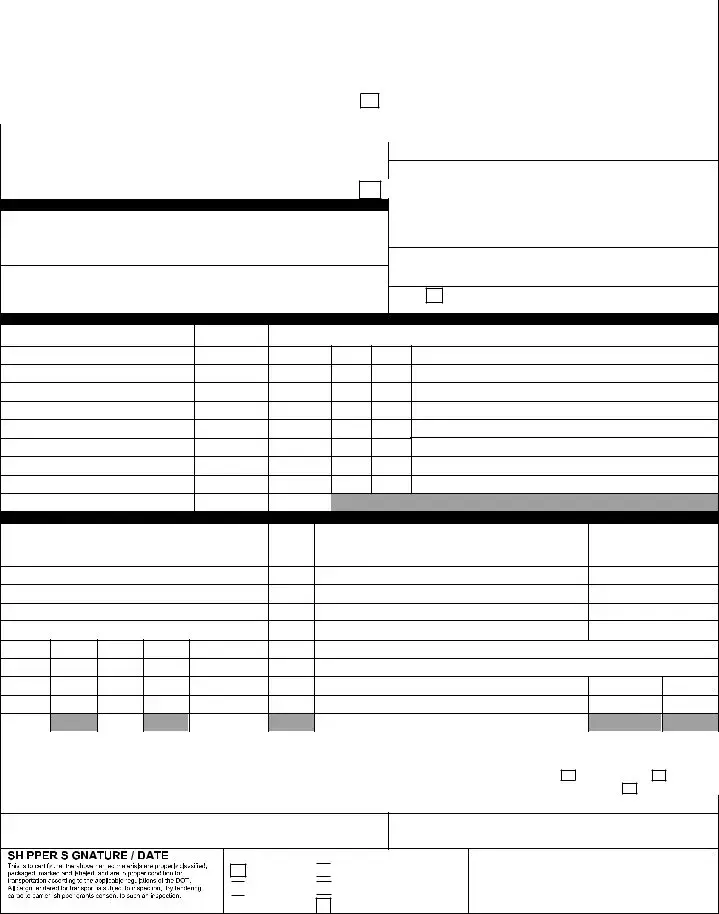Free Bill of Lading with a Supplement Form
The Bill of Lading with a Supplement form serves as a crucial document in the shipping industry, detailing the terms of transport for goods. It not only outlines the responsibilities of the shipper and the carrier but also provides additional information necessary for the smooth movement of cargo. Understanding this form is essential for anyone involved in shipping, so take the next step and fill out the form by clicking the button below.
Fill Out Your Form Online


 to certify that the above named materials are properly classified, packaged, marked and labeled, and are in
to certify that the above named materials are properly classified, packaged, marked and labeled, and are in proper condition for transportation according to the applicable regulations of the DOT.
proper condition for transportation according to the applicable regulations of the DOT.
 By Shipper
By Shipper
 By Driver
By Driver 
 By Driver/pallets said to contain
By Driver/pallets said to contain